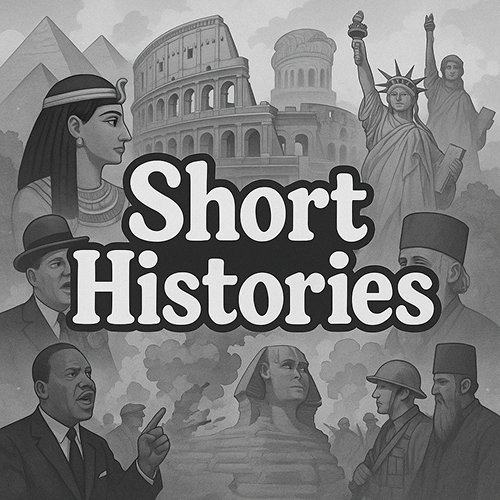In the ruins of Western Rome, where emperors once ruled from marble thrones and legions marched in the name of Caesar, a ghost empire began to stir. Centuries earlier, the mighty Roman Empire had fractured under the weight of corruption, invasions, and impossible borders. Later dividing in 285 CE into a Western half ruled from Rome, and an Eastern half governed from the rising city of Constantinople. The Western Roman Empire, weakened by internal decay and barbarian incursions, collapsed in 476 CE, while the Eastern Empire later, known as Byzantium, endured for nearly a thousand more years. But in the ashes of that fallen western throne, a new claimant rose. It would not wear the laurel crown nor command from the Tiber’s banks but it would drape itself in Latin titles and divine ambition. It would be called sacrum imperium romanum, the Holy Roman Empire, and though it bore the name of ancient majesty, it was something altogether different.
The stage was set in the year 800. Charlemagne, king of the Franks, knelt before Pope Leo III on Christmas Day in St. Peter’s Basilica. In a move both sacred and strategic, the Pope placed a golden crown on Charlemagne’s head and declared him “Emperor of the Romans”. The West had a new Caesar not in Rome but in Aachen. It was the rebirth of an empire, baptized by the Church and armored by the sword.
Charlemagne’s reign was the thunderclap, his empire stretched from the Pyrenees to the Danube, from the North Sea to central Italy. He standardized weights and measures, revived learning through the Carolingian Renaissance and struck fear into pagan enemies. However, like a fire untended, his empire began to splinter after his death in 814. His sons quarreled and by the Treaty of Verdun in 843, his realm cracked into three.
By the 10th century, the idea of a Roman Christian empire lingered like incense. Then came Otto I, a Saxon duke with steel in his eyes. Crowned King of Germany in 936, Otto consolidated power through marriage alliances and victories over Magyar raiders. He crushed rebellious dukes and extended his reach into northern Italy. In 962, Pope John XII crowned Otto as “Emperor,” reviving Charlemagne’s ghost.
Otto’s empire, marked not by clear borders but by feudal webs of loyalty, was born not in conquest but in symbolism. The emperor was imperator augustus, but unlike Roman Caesars, he shared authority with archbishops, princes, and dukes. In theory, he was supreme but in practice, he ruled by negotiation. The Holy Roman Empire was never holy though nor was it ever Roman, and never quite an empire. It was a mosaic of principalities, bishoprics, and free cities, it is more of a stage for power struggles than a single realm. And yet, the title of Emperor wielded enormous prestige, from Frederick Barbarossa in the 12th century, who drowned en route to the Third Crusade, to Henry IV’s humiliating penance at Canossa, emperors clashed with popes over the soul of the Christendom.
Later on came Frederick II, the "Wonder of the World," in the 13th century. He was a multilingual genius who ruled from Sicily and dreamed of a rational empire guided by science and tolerance. The papacy hated him. He excommunicated popes as they excommunicated him. His court was dazzling; his power immense and yet the empire he ruled remained fragmented.
By the time of the 1356 Golden Bull, a formal document issued by Emperor Charles IV, the empire’s nature was clear: decentralized, elective, and deeply ceremonial. Seven prince-electors, archbishops and secular lords, would choose the emperor. Now, it was empire by committee, not coronation.
Still, despite the chaos, the empire endured. It repelled Mongols, it absorbed the Black Death and oversaw the Gothic cathedrals and the flowering of medieval universities. In the German heartlands, towns grew rich on trade while knights clung to old feudal rights.
But the seeds of division lay within its very name. Holy? but the emperors often clashed with the papacy, Roman? its power was centered in the Germanic lands, Empire? its authority barely extended beyond what the princes allowed. The Holy Roman Empire, in this first phase of its long and twisting tale, was less a unified state than an idea. An aspiration draped in sacred pageantry and a balancing act of ambition and compromise. But the age of Martin Luther, of the Reformation and religious wars, was still to come.
And yet, even as it creaked under contradictions, the empire stood. It endured, held prestige and mattered.
This was the Holy Roman Empire.
Next Time: Holy Roman Empire Final Part | The Reformation and the Sword
As faith splinters and the flames of heresy roar across the German lands, the empire faces a trial by conscience and combat. From Luther’s hammer to the Thirty Years' War, power, religion, and survival hang by a thread.
Please go back to top & scroll gently

